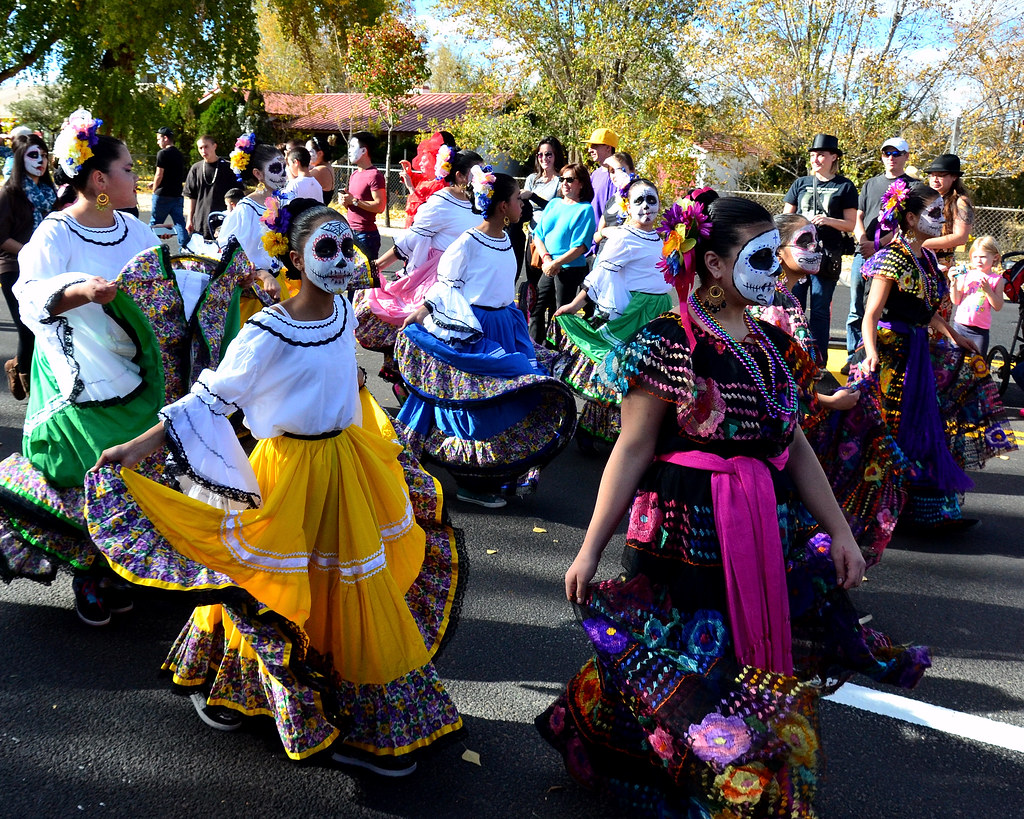
“Dia de los Muertos Marigold Parade,” PHOTO BY DODGE LAMSA, CC/BY 2.0 Street performers dress, paint their faces, and dance for Dia de los Muertos during a parade in Albuquerque, New Mexico. Skull face paint is typically worn to represent deceased family members.
Inside the Holiday: Celebrating Dia de los Muertos
Día de los Muertos, or “Day of the Dead,” is a traditional Mexican holiday that honors deceased family members. Typically occurring on the first or second day of November, it is celebrated throughout a large part of Latin America as a way to share memories and create things for relatives and ancestors.
One of the primary ways to celebrate Día de los Muertos is through the creation of ofrendas. The term is translated directly as “offering,” although ofrenda is often used to refer to the large and elaborate altars. They are typically dedicated to deceased family members, usually holding their favorite things, including food or drinks. Ofrendas are places to pay respects to the dead.
Unlike many holidays based around the dead, Día de los Muertos is less somber; spirits are high as family members share stories of the departed. This is a main characteristic that sets apart Día de los Muertos from other, similar events, as most times of mourning are filled with far less joy compared to Día de los Muertos celebrations.
Another traditional creation during the holiday is the calavera, or skull. They are small sculptures of human skulls made out of edible sugar. Calaveras are either given as gifts or set on ofrendas as decoration. A somewhat related tradition is the calavera literaria, or “literary skull,” a short rhyming poem dedicated to a family member or a friend. Calaveras literarias are typically based on humorous anecdotes–either true or fictional–from the person’s life and are mixed with death-related imagery, even if the person has yet to pass away.
Día de los Muertos as a tradition allows a great amount of family bonds to be built. People can share and bond over a mutual love for their deceased relatives. With that, the whole family can come together.